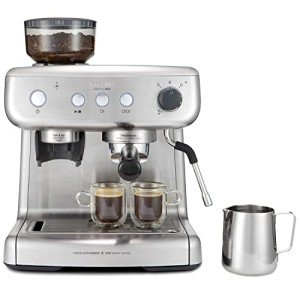Understanding Dual Boiler Espresso Machines : A Comprehensive Guide
Espresso is an art as much as it is a science. For coffee lovers and baristas alike, attaining the best shot of espresso necessitates accuracy and control over brewing variables. Among the most effective ways to accomplish this accuracy is through making use of dual boiler espresso machines. This short article looks into the functionality, advantages, and considerations of dual boiler espresso machines for both beginners and experienced coffee fanatics.
What is a Dual Boiler Espresso Machine?
A dual boiler espresso machine features two different boilers: one for developing espresso and the other for steaming milk. This design allows the user to brew coffee and steam milk at the same time, achieving optimum temperature level control for both processes. This is vital for creating lattes, cappuccinos, and macchiatos, where both ingredients are necessary.
Table 1: Key Components of Dual Boiler Espresso Machines
| Part | Function |
|---|---|
| Espresso Boiler | Heats up water to the ideal brewing temperature (around 190 ° F) |
| . Steam Boiler | Heats water to a higher temperature level (around 250 ° F) for steaming milk. |
| PID Controller | Manages the temperature of the boilers for accuracy developing. |
| Group Head | Where the coffee premises sit and hot water goes through. |
| Steam Wand | Provides steam to froth milk. |
Advantages of Dual Boiler Espresso Machines
1. Synchronised Brewing and Steaming
The most significant benefit of dual boiler espresso machines is the capability to brew espresso and steam milk at the exact same time. This performance is especially useful in busy environments, such as cafes, where speed and quality are paramount.
2. Consistent Temperature Control
Dual boiler machines often feature innovative PID (Proportional Integral Derivative) controllers that maintain a consistent temperature level throughout the developing procedure. Consistency is important in espresso making to ensure the very best extraction, therefore boosting taste and aroma.
3. Customization and Versatility
With two different boilers, users can tailor the temperature level settings for both espresso brewing and milk steaming. This indicates various types of coffee, such as lighter or darker roasts, can be prepared perfectly to fit individual taste profiles.
4. Suitable for Advanced Techniques
For those interested in latte art or other advanced methods, a dual boiler espresso machine provides the versatility to deal with numerous milk textures while likewise extracting espresso. This adaptability makes it an appealing option for baristas who want to sharpen their abilities.
5. Longevity and Durability
Numerous dual boiler machines are developed with high-quality products developed for durability. They are frequently made from stainless-steel and function resilient parts, making them a beneficial financial investment for anybody severe about coffee.
Disadvantages of Dual Boiler Espresso Machines
Regardless of their various advantages, dual boiler machines can have some downsides:
- Higher Cost: Dual boiler machines tend to be more expensive than their single-boiler counterparts, which may not appropriate for casual coffee drinkers.
- Size and Space: These machines may occupy more counter top space than others, making them less ideal for little kitchen areas.
Table 2: Key Considerations When Choosing a Dual Boiler Espresso Machine
| Factor to consider | Description |
|---|---|
| Budget | Dual boiler machines can vary from ₤ 1,000 to over ₤ 4,000. |
| Size | Inspect your cooking area area before acquiring. |
| Brand Reputation | Try to find well-reviewed brands with excellent customer assistance. |
| Features | Consider what functions are vital (e.g., PID controller, volumetric alternatives). |
| Maintenance | Some machines may need more regular upkeep than others. |
FAQs
1. Are dual boiler espresso machines worth the investment?
Yes, they are worth the financial investment for major coffee lovers or professional baristas who value accuracy in espresso extraction and milk steaming.
2. How do I maintain a dual boiler espresso machine?
Regular maintenance consists of descaling the machine, cleaning the group head, and ensuring that the steam wand is devoid of milk residue. Seek advice from the manufacturer's manual for particular guidelines.
3. Can I use a dual boiler espresso machine for other brewing techniques?
Typically, dual boiler machines are designed mainly for espresso. However, they can normally brew quality drip coffee and other designs with the ideal settings and adjustments.
4. What brand names are understood for their dual boiler machines?
Some credible brand names include La Spaziale, Breville, and ECM. Each brand name has its own special features and prices.
5. What is the average life-span of a dual boiler espresso machine?
With appropriate care and maintenance, a dual boiler machine can last over a years, making it a long-term financial investment for coffee lovers.
Dual boiler espresso machines represent the apex of espresso-making technology, combining art and science into one compact gadget. While they need a higher preliminary investment and more counter top space, the advantages they provide-- such as synchronised developing and steaming, accurate temperature level control, and durability-- make them ideal for serious coffee lovers. Understanding the workings, benefits, and factors to consider for these machines will make it possible for customers to make educated decisions and elevate their coffee developing experience. Whether in the house or in a hectic café, a dual boiler machine can really enhance the art of espresso.

